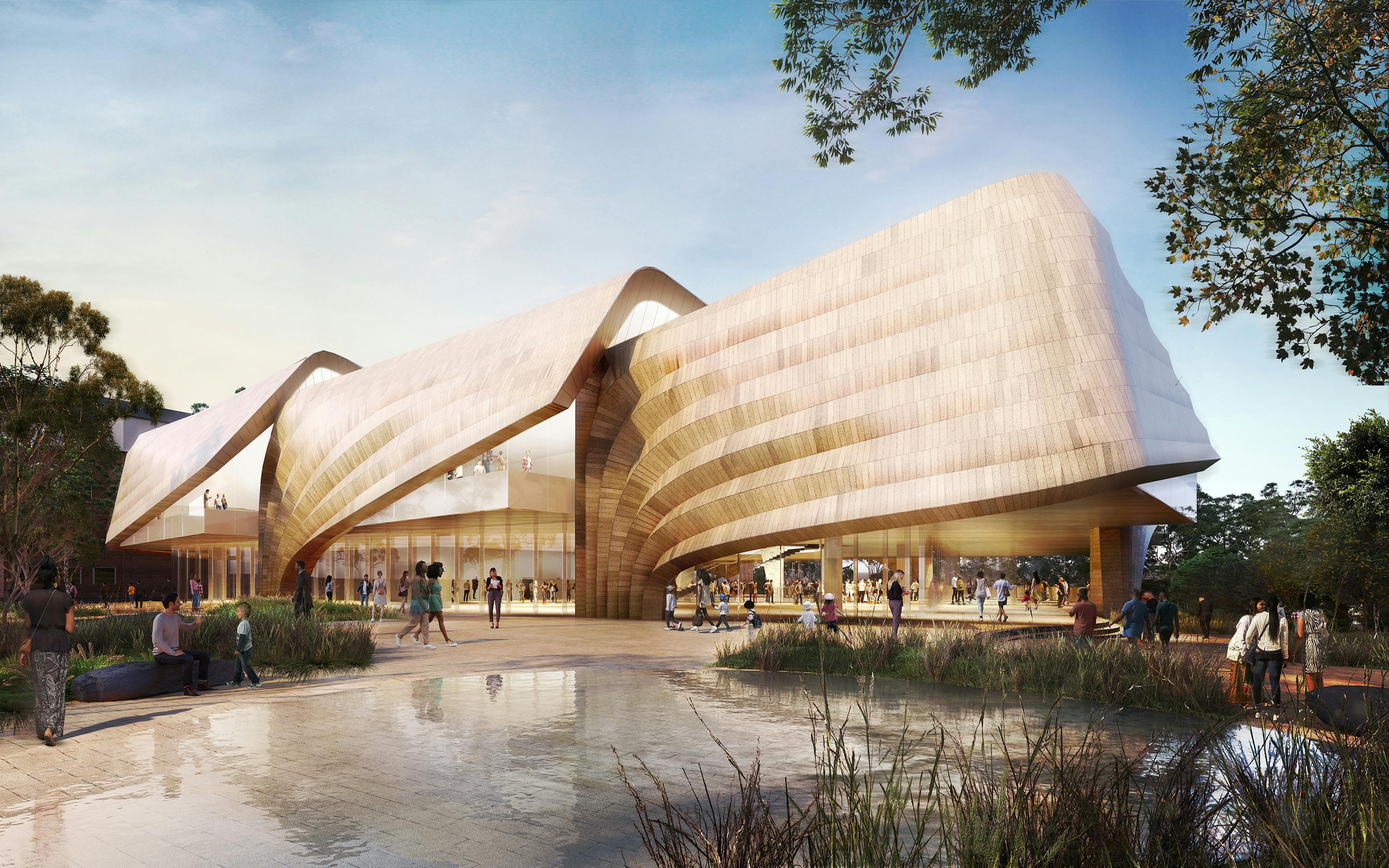
Images courtesy of Woods Bagot.
Concept designs for the Aboriginal Art and Cultures Centre (AACC) submitted for planning assessment
The concept design for the Aboriginal Art and Cultures Centre (AACC) has been submitted for planning assessment. Designed by Diller Scofidio and Renfro, Woods Bagot, OCULUS and Paul Herzich (in close collaboration with an appointed Aboriginal Reference Group), the Centre will be built on Kaurna land on the site of the old Royal Adelaide Hospital in Adelaide, South Australia.
The building, reminiscent of a series of basket-like forms, will be intimately connected to the landscape, with an outdoor gallery cantilevered over a terraced amphitheatre at the northern end of the site. At the interface with North Terrace, reflective pools and mounds of indigenous planting create an immersive landscape experience and reminder of Country at the entrance to the Centre. Interconnected pathways will wind around the building and flow into smaller, quiet spaces throughout the site to enable visitors to take time out from the city environment and immerse themselves in the landscape.
The Aboriginal Reference Group that the design team is collaborating with is made up of Jack Buckskin and Jessica Davies-Huynh, representing Kaurna people through the Kaurna Yerta Aboriginal Corporation; Karl Telfer, Tandanya National Aboriginal Cultural Institute; Sandy Miller, SA Museum Aboriginal Advisory Committee; Cara Kirkwood, Art Gallery of South Australia; Craig Ritchie, Australian Institute of Aboriginal and Torres Strait Islander Studies; and Kirstie Parker, Aboriginal Affairs and Reconciliation, Department of the Premier and Cabinet.
“The design team’s role has always been to listen to and translate the aspirations and ambitions of the ARG into a design response,” said Woods Bagot principal Rosina Di Maria. “The architecture evokes a sense of welcome to all visitors – particularly First Nations peoples – and a connection to culture offered through the human experience.”
Grounded on Kaurna land at Lot Fourteen, the AACC will provide a platform for First Nations people to share their cultures and tell their stories. The design includes spaces for permanent and visiting exhibitions, cultural performances, meetings and ceremonies, gatherings and events, and a café and retail space.


